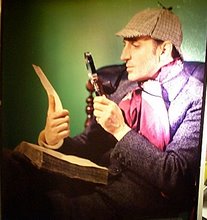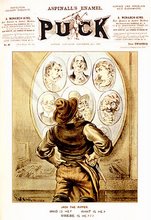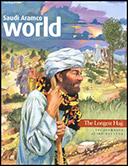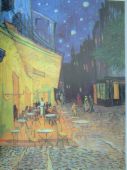Perhimpunan Agung UMNO 2006 has commenced in Malaysia.
It should be a meeting of discussions and promising efforts in order to achieve the 9th Malaysia Plan objectives and not to forget, the Vision 2020.
The success of bringing down the 5% budget deficit in the economy to a point of 3.5% since 2003, shall be seen as the cornerstone for the more improvements in the future.
Kudos.
Do not take things for granted, all of you are obliged as khalifahs for the rakyat.
And I shall say, "The people in the glass houses should not throw stones to each other".
Similarly, "The kettle should not be calling the pot black".
Claptrap and shilly-shally, are to be avoided.
I shall say no more.
To the oppositions, grab the opportunity of freedom in giving speech and opinions as a bed of constructive criticisms.
;)
And post-the-heating-discussion of the assembly, Kathiresan wrote -
I HAVE begun looking at earwax in a different light. Some scientists, it appears, are waxing lyrical about that yucky paste’s ability to reveal the route our early ancestors took to reach the lands which they later populated.
A team of 39 researchers started prospecting for earwax to trace a pattern out of Africa where our genus is said to have begun.
After studying the genes in earwax of people in 33 ethnic groups across the globe, they conclude that there are basically two types of earwax: Wet and dry.
Almost all East Asians have dry earwax while almost all Europeans and Africans have the wet variety. Half of those in central and southern Asia have dry earwax while the other half has the wet stuff.
The scientists, led by researchers from the Nagasaki University Graduate School of Biomedical Sciences in Japan, concluded that a gene called ABCC11 caused this difference. Why ABCC11? Perhaps the study was as simple as ABC. Or perhaps digging wax caused their dalliance with Greek and Latin words to wane.
If I understand it rightly, the ABCC11 controls the behaviour of a cell channel which in turn controls the flow of earwax-altering molecules. When, and if, a ABCC11 mutates, it can change the structure of the channel. This affects the type of earwax produced.
The researchers found that the switch in a single DNA in ABCC11 determines whether a person has wet or dry earwax.
They said a change in the channel could have occurred in our ancestors in north or northeast Asia. From there, the dry earwax spread to America.
This, if you are willing to lend them an ear, indicates that native Americans crossed over from the Siberian region, probably some 15,000 years ago.
On the subject of migration, some scientists, are questioning the Out of Africa theory that Homo erectus evolved in Africa and then spread out.
For years, I have read that my ancestors climbed down from the trees and wobbled on the African savannah before migrating — on foot — to India.
My cousins, of course, went their way and populated other parts of the earth such as China, Russia and Europe.
A recent genetic study of certain populations by Oxford University researchers showed that some of the earliest migrants could have travelled to Asia along the coasts of what are now Pakistan and India some 100,000 years or so ago.
But late last year, archaeologists Robin Dennell of the University of Sheffield in England and Wil Roebroeks of Leiden University in the Netherlands suggested that the first human-like beings probably walked in Asia.
They claim that early-human fossil discoveries in Asia are just as ancient as those found in Africa — up to 1.8 million years old.
Paleoanthropologists believed Neanderthals came after Homo erectus to be followed by Homo sapiens. But new dating techniques later showed that Homo Sapiens existed, in some places, at the same time as Neanderthals. It was then felt that Neanderthals and humans occupied different branches of the evolutionary tree. But soon, the hulking Neanderthals disappeared, with most scientists speculating that humans wiped them out.
Some, however, think the Neanderthals did not disappear but interbred with humans.
If you ask me, Neanderthals and other simian-like characters are still in our midst. They have simply put on clothes. Look around and you are sure to find quite a few simians walking among us.
You may not recognise them immediately, though. For one thing, their caudal appendages have shrunk into oblivion. For another, many of them wear coats and ties.
Having mastered language, and possessing an unshakeable belief in their infallibility or point of view, they run riot among us.
Some of them can be seen sitting in air-conditioned comfort discussing ways to pit one person or group against another; some can be seen frothing at the mouth at meetings as they pass incendiary remarks about other religions; and some are so dense, you wonder why they don’t hop onto the nearest tree and swing away to a galaxy far, far away.
Questions about Neanderthals and whether Out of Africa sounds better than Out of Asia may perplex scientists. But they don’t trouble me.
I’m inclined to side with those who say that where we are headed as a species is more important than where we come from. But since our origins will shed light on our present, I think it is wise to learn more.
Whether one believes we were created by God or are descended from apes or were seeded by aliens, everyone agrees that we have a common origin.
So why can’t we see that before we became East or West, before there was Islam or Christianity or Hinduism or Buddhism or Sikhism or any other religion, we were one family?
Religions are infants in our history. The concept of God took root millennia after our species started walking on Earth.
Can we say there was no God until the religions that exist today took shape?
Yes, we left Africa aeons ago, but we have yet to discard our animal heritage. Isn’t it time we behaved as humans?
Let us drink anew to the time when you Were a tadpole and I was a fish. — Langdon Smith
Monkey see monkey do, what say you?
TALKING about monkeys, I’ve decided not to use the phrase "monkey business" anymore. It is not something to be scorned or laughed at.
Monkeys, it appears, do know their business.
Yale University researchers played around with a colony of capuchin monkeys (indigenous to South America) to see how they made economic decisions. They (the scientists, not the monkeys) found that there was much similarity in the behaviour between them (the monkeys, not the scientists) and their Darwinian descendants.
The scientists conducted experiments to observe how the monkeys mimicked trading and gambling activities. Not surprisingly, they found that the monkeys’ behaviour mirrored that of our businessmen.
The authors of the study, Keith Chen, Venkat Lakshminarayanan and Laurie R. Santos, said the results of the experiment "suggest that loss-aversion extends beyond humans, and may be innate rather than learned".
The lesson perhaps is not to do business with a monkey or monkey around with a businessman.
If we need more proof that we are not too far removed in behaviour from our swinging cousins, let me recount an experiment done by a team led by Gerianne Alexander, a psychologist at Texas A&M University in College Station. The scientists placed a variety of toys in front of 44 male and 44 female vervets, a breed of small African monkeys.
They were surprised to find that male monkeys preferred to play with toy cars while the female monkeys kept company with the dolls. Also, the males liked playing with balls while the females enjoyed knocking around with cooking pots. This led Alexander to conclude: "Vervet monkeys, like human beings, show sex differences in toy preferences. Sex-related object preference appeared early in human evolution."
In another experiment, capuchin monkeys were found to co-operate to obtain food and share the rewards for their efforts.
Primatologists at the Yerkes Primate Centre of Emory University discovered that the monkeys had learnt to do what we often find so difficult: Co-operating for mutual benefit.
The director of Yerkes’ Living Links Centre, Frans de Waal, said: "Society wouldn’t exist without co-operative behaviour. Our lives depend on our ability to co-operate with one another and to reciprocate for the help of others."
Simians are certainly smarter than I thought they were. The smartest of all non-human primates, according to Duke University Medical Centre researchers, are the great apes.
And swinging at the top of the smart pyramid are our very own orang utans — together with chimpanzees and gorillas.
Now I understand why the orang utan is often chosen as our mascot.
Subscribe to:
Post Comments (Atom)





No comments:
Post a Comment